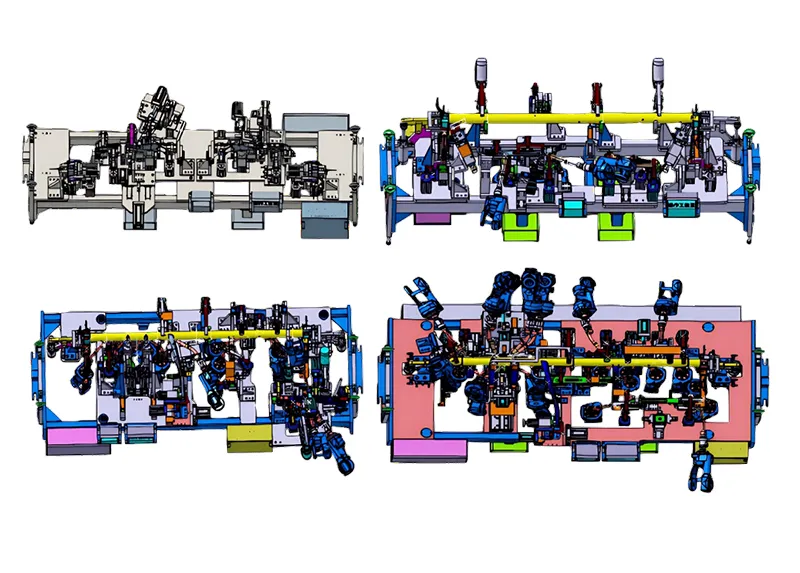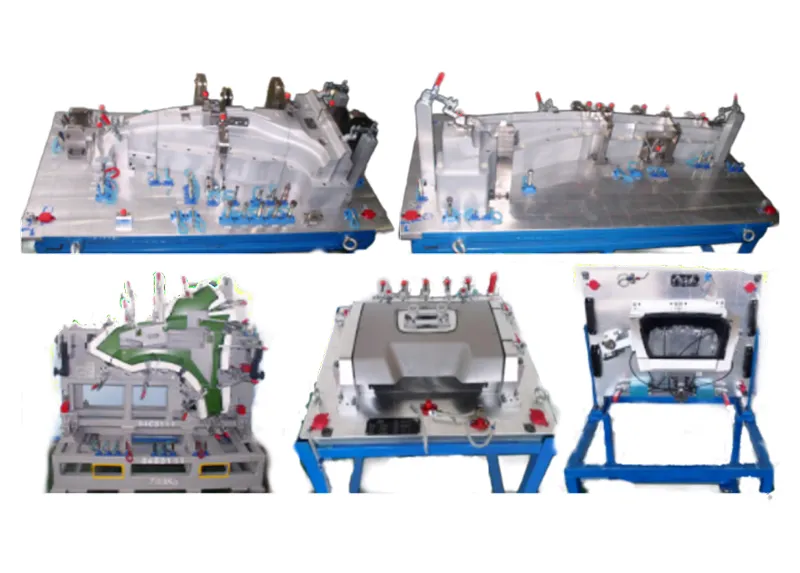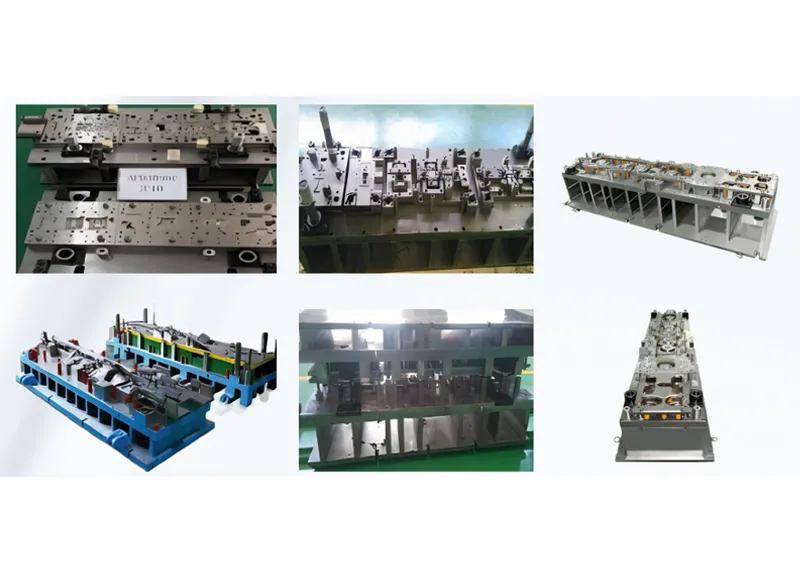Progressive stamping die design is a critical aspect of modern manufacturing, especially in industries like automotive, electronics, and consumer goods. At Shoujia Group, we specialize in creating custom progressive stamping dies that deliver high-quality, cost-effective solutions for mass production. With over two decades of experience in precision manufacturing, our team leverages advanced engineering techniques to design dies that maximize productivity and ensure the consistent performance of stamped parts.
Progressive Die Metal Stamping
Progressive metal stamping is one of the most common and cost-effective methods used by manufacturers. Parts produced using progressive die stamping pass through a variety of stations, each of which performs a specific function, such as embossing, blanking, punching, or embossing. Depending on the requirements of the part, these functions can be mixed and matched to achieve the desired results.
What is Progressive Stamping Die Design?
Progressive stamping die design refers to the creation of a die that allows for multiple stamping operations in a single stroke. This process is ideal for high-volume production, as it enables the continuous movement of material through different stages, where each stage progressively shapes or cuts the material. The design of the die is crucial in determining how efficiently the material flows through the stamping process and how accurately the final parts are produced.
Advantages of Progressive Die Stamping
Increased production speeds. Because parts are fed continuously, progressive die stamping can produce more parts at a faster rate. This makes it particularly well-suited for businesses that require high-volume production.
Reduced scrap waste. Progressive die stamping uses sheet metal to produce parts, which reduces scrap generation. The optimized design of progressive dies also helps reduce scrap.
Design freedom. Progressive die stamping can produce parts in a variety of geometries, from simple to complex. This provides manufacturers with wider design freedom.
Increased production capacity. Progressive die stamping can handle high throughput and longer production cycles, allowing manufacturers to produce more parts in less time.
High Repeatability. Progressive die stamping uses hard, durable dies that allow for high volume production without damaging the dies. This allows manufacturers to produce high quality parts with optimal repeatability.
Lower cost per part. Progressive stamping dies reduce cost per part by increasing production speed, repeatability, quick setup and reducing material waste. Since the process can be easily automated, it reduces labor costs and lowers the risk of workplace injuries.
Achieve tight tolerances. Progressive stamping allows for the production of large quantities of components with high precision and accuracy, and maintains tight tolerances over long production runs.
Progressive Die Stamping Process
Toolmaking. Progressive die stamping starts with the toolmaker making a die set or tool that meets the requirements of the application. Progressive die sets perform the entire part stamping process without the need to change tools between operations.
Die Placement. Once a die is made, it must be placed in the stamping press. The die opens when the press moves up and closes when the press moves down.
Load Metal. The coil metal is then loaded and continuously fed into the die with each press stroke.
Performing the operation. With just one stroke, the press can perform several stamping operations, including cutting, bending, embossing, or crimping. Each time the die closes, the part moves (or advances) to the next station in the die.
Part Ejection. The workpiece passes through each station and takes on its final shape and dimensions. At this point, the finished part is ejected from the mold and cut off the carrier tape.















